Automated Room Disinfection by Aerosol
Seamless 3D room disinfection in room hygiene
Seamless 3D room disinfection in room hygiene
Since the onset of the COVID-19 pandemic, awareness of targeted disinfection applications for hygiene optimization in facility maintenance has significantly increased. The possibility of whole-room disinfection in business areas, public services, cultural and educational sectors, and hospitality provides an ideal complement to traditional disinfection methods such as spraying and wiping. This is not only for mitigating COVID-19 risks but also for reducing the spread of „classic“ infectious diseases such as flu, respiratory infections, or gastroenteritis.
Aerosol disinfection effectively complements traditional surface disinfection in facility maintenance, helping to close hygiene gaps. In aerosol disinfection, disinfectants are sprayed into the air as fine particles, thoroughly disinfecting previously unreachable areas such as room air and hard-to-access surfaces. This method enables comprehensive decontamination of surfaces that might otherwise be overlooked.

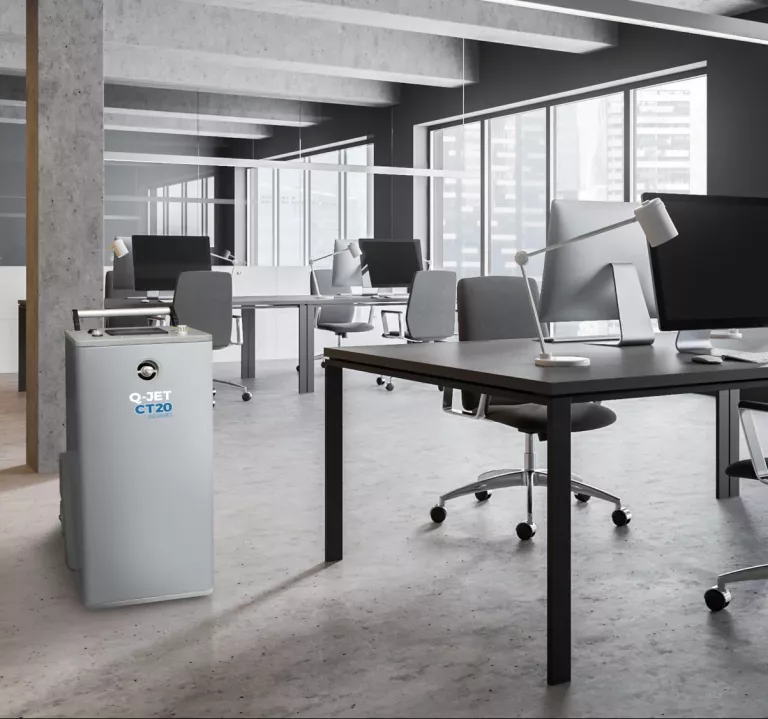
The combination of purpose-built devices (such as the Sanosil Q-Jet series) and the appropriate Sanosil disinfectants has proven to be outstandingly effective for 3D whole-room disinfection for over 25 years.
High-end aerosol device for automated 3D room and air disinfection
Disinfectant for demanding aerosol applications with AFNOR NFT 72-281 certificate
Disinfectant (without silver ions) for demanding aerosol applications with EN - 17272 test


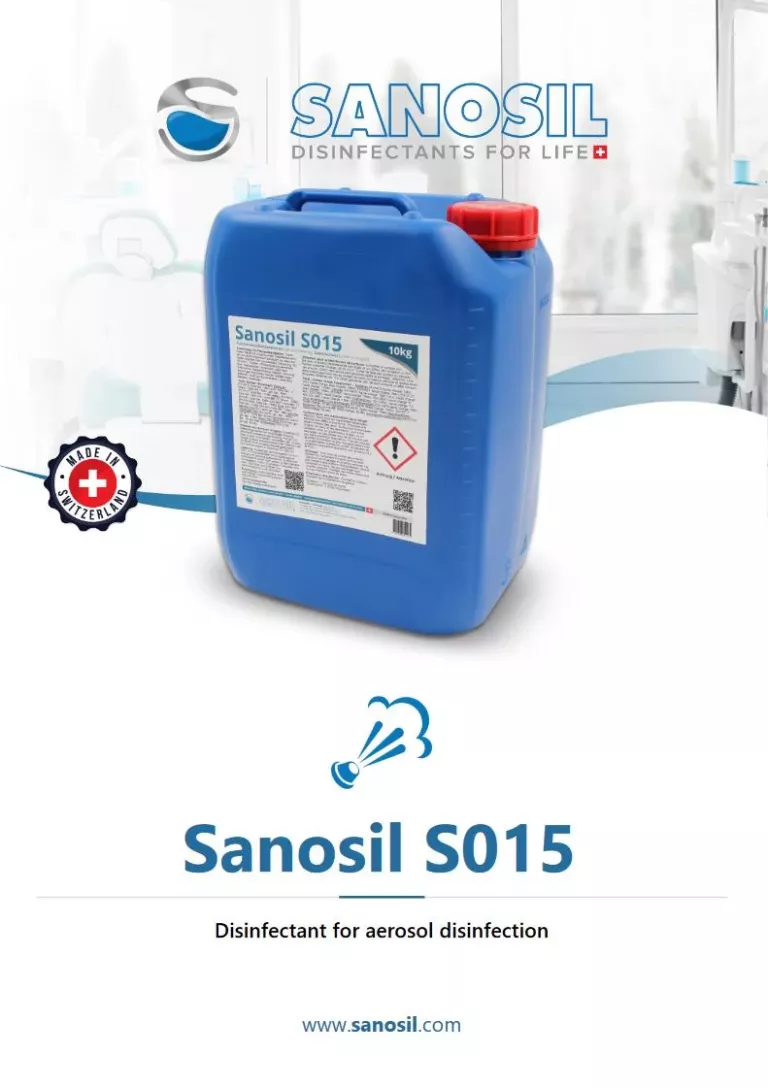
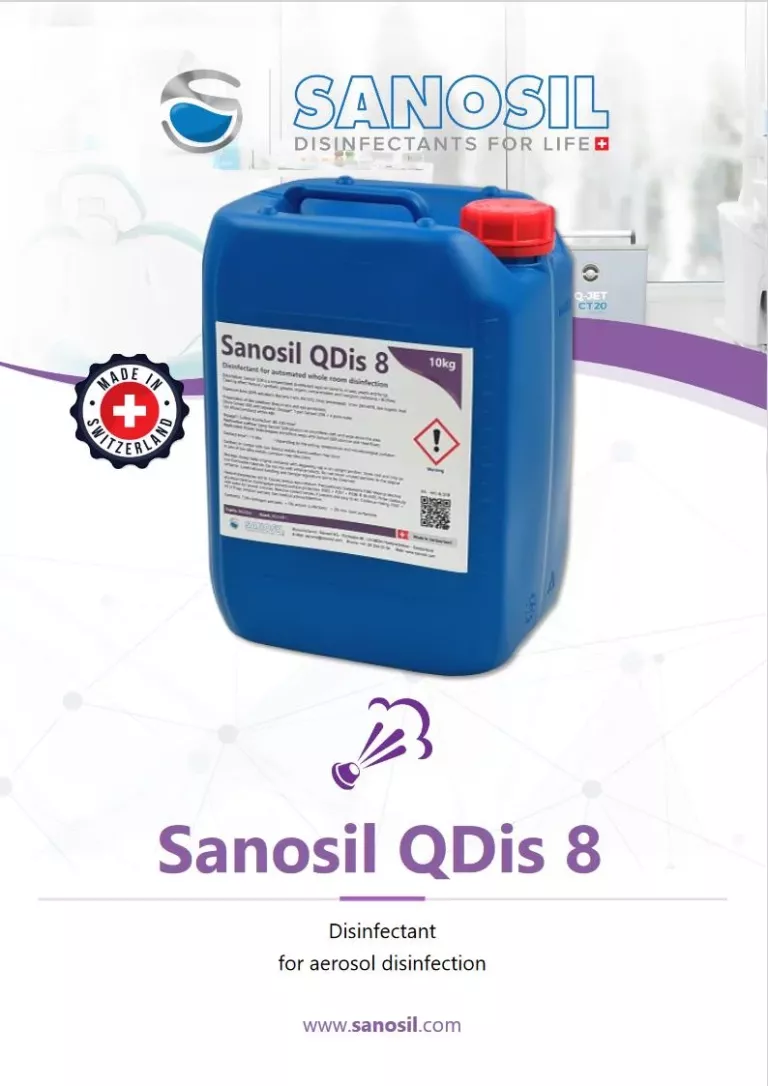
A: No, that is not possible. While aerosol disinfection provides more comprehensive and better coverage of all surfaces compared to wipe disinfection, it has limited penetration depth. Even small dirt residues can significantly reduce the effectiveness of aHP disinfection, making thorough pre-cleaning indispensable. Aerosol technology is an additional safety measure for mitigating microbiological risks.
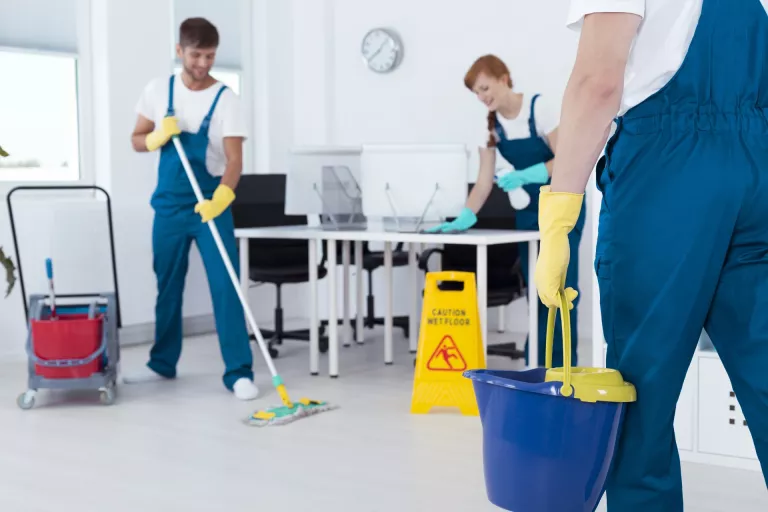
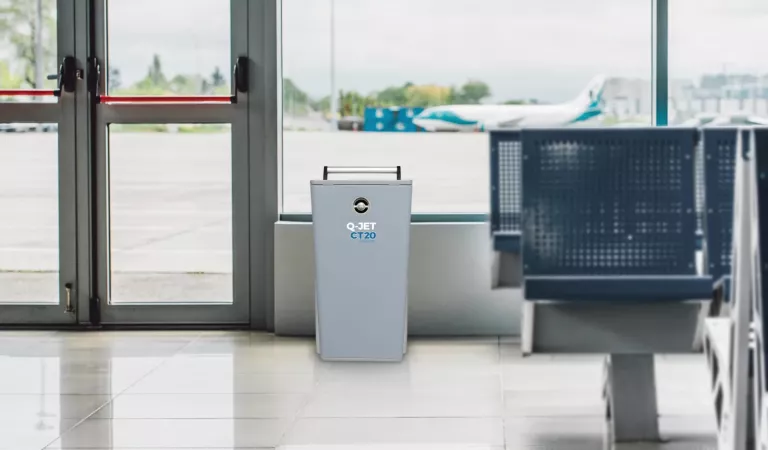
A: No. Due to the time required for thorough 3D room disinfection, this technology is less suitable for quick interim disinfection. However, it is ideal for thorough base disinfection in conjunction with other hygiene measures.
A: The required time consists of A) the spraying time – the time it takes to nebulize a certain amount of disinfectant in a room, and B) the necessary exposure and decomposition time. During the exposure time, germs are actively reduced. Simultaneously, the hydrogen peroxide breaks down into water and oxygen. This process takes at least 120 minutes – overnight application is ideal.
![]()
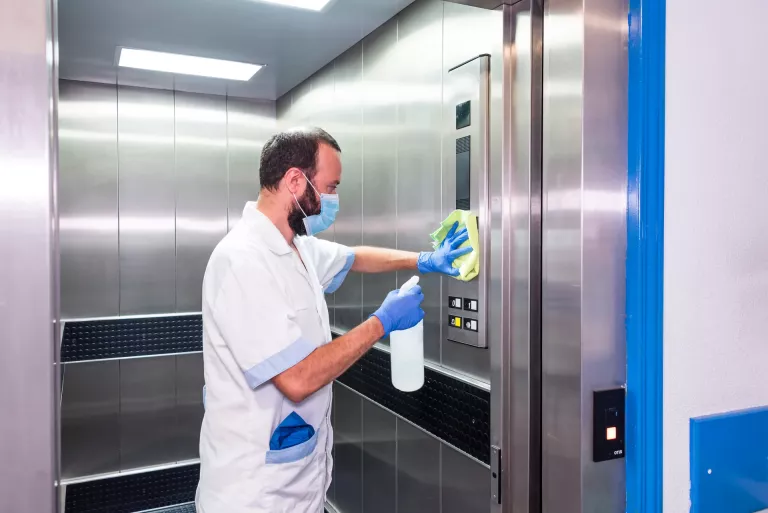
A: No, that is not possible. During and for some time after the disinfection, no persons or animals should be present in the treated room, and doors/windows must remain closed.
A: Various independent studies and our own experiences show that electronic devices such as PCs, tablets, flat screens, mobile phones, etc., are not affected by aerosol disinfection with hydrogen peroxide. In contrast, chlorine dioxide or peracetic acid solutions can compromise the integrity of electronic devices.
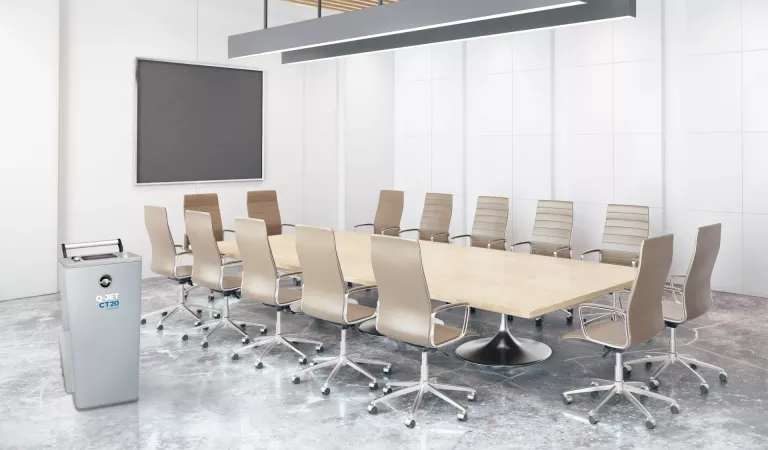
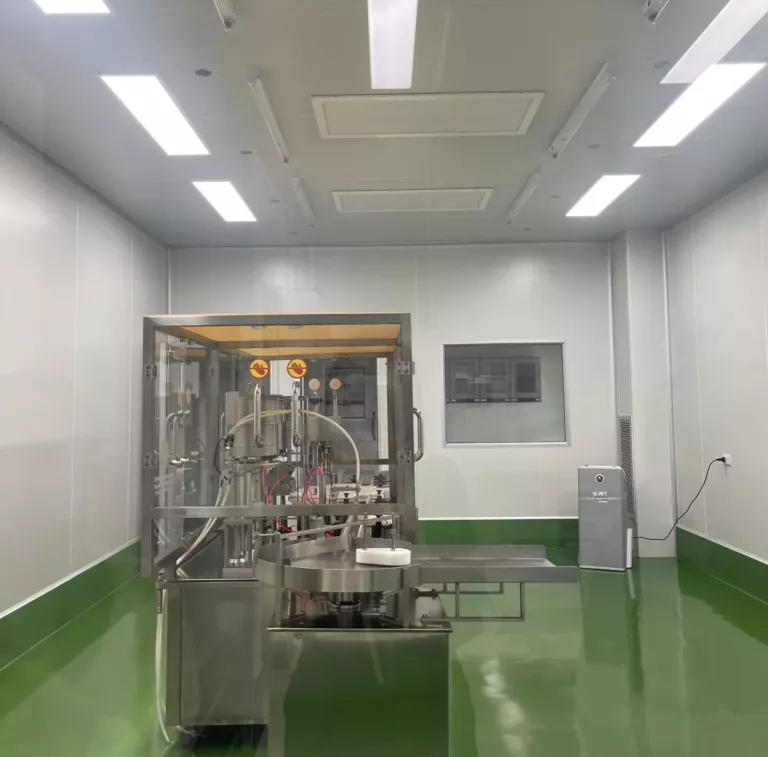
A: Fogging devices basically use two technologies to generate aerosols: compressor & nozzle or turbine. A compressor presses the disinfectant through a nozzle to produce aerosols. With a turbine, on the other hand, the disinfectant is entrained by an air stream using the Venturi effect and finely atomized. Both technologies have their preferred areas of application. Compressor devices are more suitable for small and medium-sized rooms, while turbine devices are more suitable for medium-sized to large rooms.
(The Sanosil Q-Jet CT-20 has both technologies and can therefore be used for rooms with a volume of 4 – 600m³).
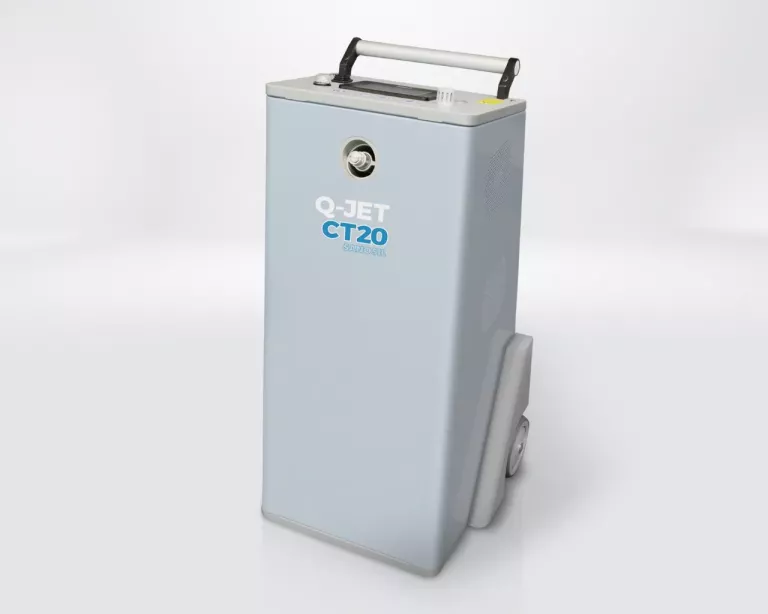
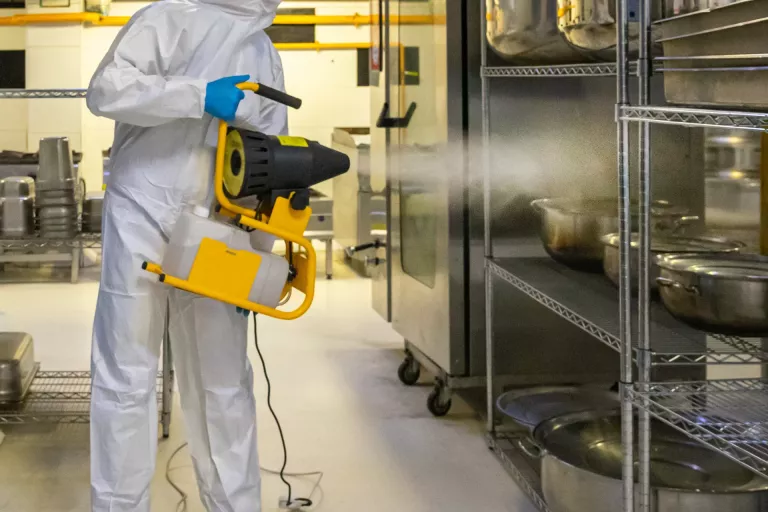
A: Portable spray devices are not classified as traditional aerosol devices. Their main purpose is to manually and directly spray surfaces with a fine mist. This inevitably creates aerosols, requiring appropriate personal protective equipment during disinfection. However, unlike aerosol disinfection devices, the majority of the sprayed disinfectant from spray mist devices lands directly on the treated surfaces due to the directed spray direction. These surfaces typically become moistened.
Aerosol devices, on the other hand, generate a „dry“ mist that evenly disperses throughout the room. This method avoids the moistening of surfaces.
Our core competencies include the manufacturing and application consulting of disinfection products for water systems, surfaces, and air (complete room disinfection).